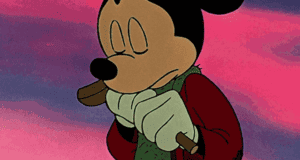
The Walt Disney Company finds itself embroiled in yet another court case that could end up costing the company billions. No, not that case, another one. In 2017, Walt Disney Studios released the live-action Beauty and the Beast (2017), which earned $1.27 billion at the box office. The life-like features of the Beast blew fans away. And it is the use of that technology that Disney must now defend in court.
Related: Disney Loses Supreme Court First Amendment Case
Disney used visual effects (VFX) technology called MOVA Contour Reality Capture to create a life-like Beast. Beauty and the Beast director Bill Condon said the technology “actually captured every pore of Don Stevens’ skin, and that’s why so much of him–this great performance–comes through.” The technology worked so well that Disney used it again in Guardians of the Galaxy: Vol 2 (2017), Avengers: Infinity War (2018), and Avengers: Endgame (2019).
But there was a problem. Disney and Marvel Studios teamed up with DD3 to create the look of the films, using MOVA, but DD3 may not have owned the technology it used to create the VFX. And this is where the courts come in. Rearden, a firm started by inventor Steve Perlman, developed the original technology. The issue is whether Disney should be held liable for DD3’s use of a technology that did not belong to them. If the court finds in Rearden’s favor, it could cost Disney billions in profits from the films.
Related: The Supreme Court is About to Hear Two Cases That Will Gut Its Defense Against DeSantis
The MOVA technology first appeared in The Curious Case of Benjamin Button (2008). It revolutionized film as it aged Brad Pitt in reverse. In 205, the Academy of Motion Picture Arts and Sciences recognized the VFX technology with an honorary award, and that’s when the legal issues started. Greg LaSalle, who was working with Digital Domain, accepted the award. LaSalle and Perlman worked together at Rearden. A judge later concluded that LaSalle never owned MOVA or had the authority to use or sell it.
But by then, Digital Domain, through a British Virgin Islands-based shell company, had licensed MOVA’s use to DD3, and that’s where Disney comes in. Disney hired DD3 to work on Beauty and the Beast in March 2015, and the film was released in March 2017. The court ruled that Rearden owned MOVA in August 2017. Disney contends that due to that timing, Rearden should not receive a cut of the film’s profits.
The case is unclear for the other three films Disney Studios and Marvel used DD3 for VFX. The four films that Disney worked with DD3 on took in $6.881 billion at the box office. An industry estimate suggests that 10-15 percent of that was due to the VFX work, which means Rearden’s technology accounted for $688 million to $1.032 billion worth of Disney’s profit on those four films.
The case is being heard in Oakland Federal Courthouse and is expected to last a week to 10 days. This case will only decide the fate of Beauty and the Beast. New trials are coming for the Avengers films and Guardians of the Galaxy.
We will continue to update this story at Disney Fanatic.






